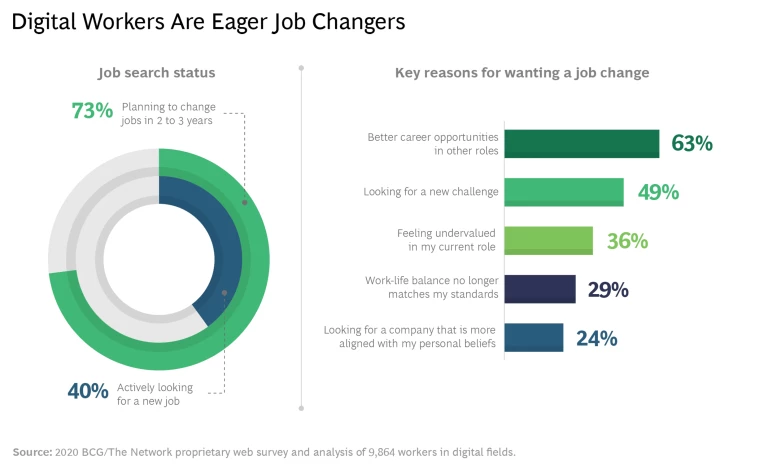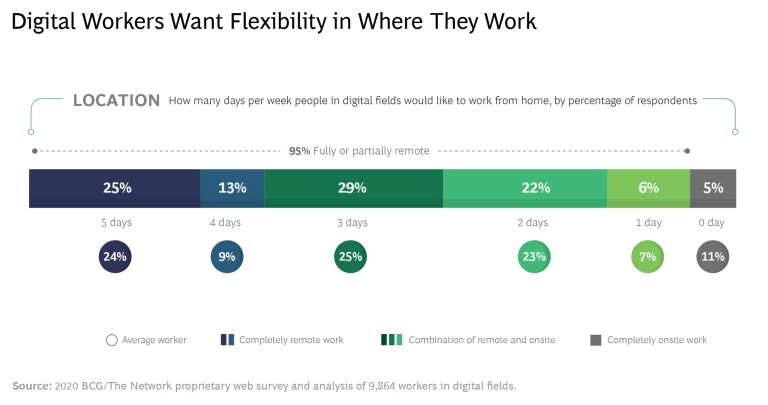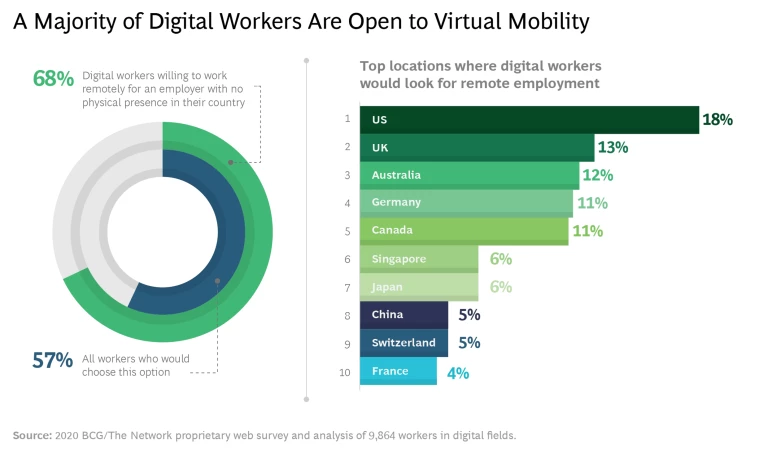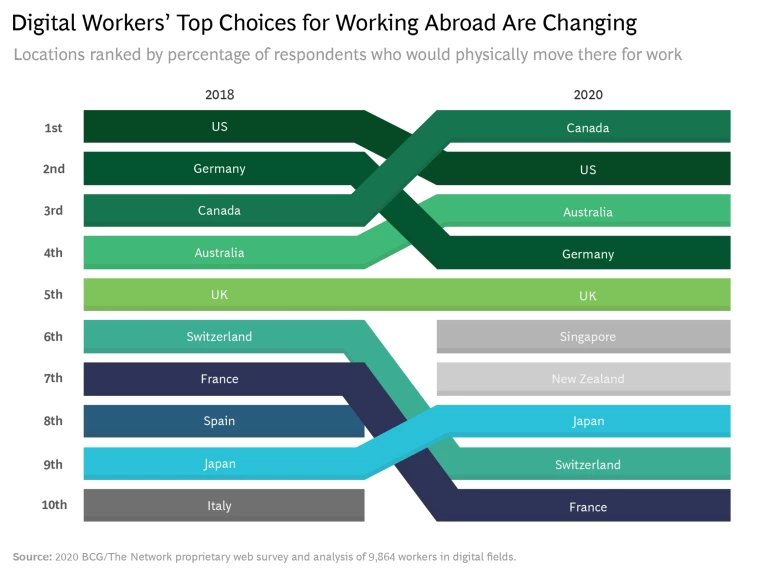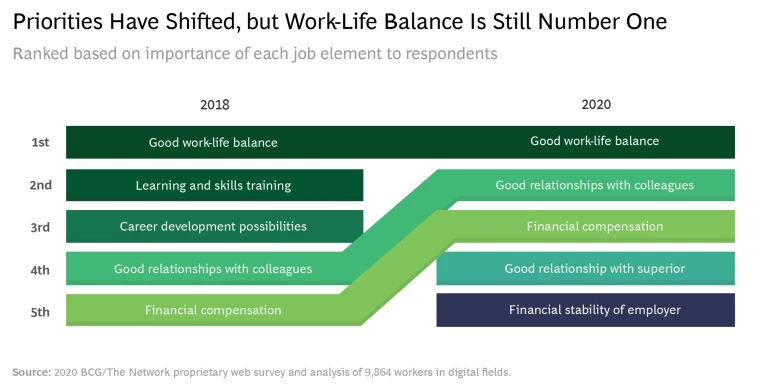In a global survey, 9,900 digital workers shared their attitudes about remote work, job change, and what their ideal workplace should offer. Employers, take note.
This article is part of BCG’s Decoding Global Talent series , which investigates how work gets done around the world to uncover long-term workforce trends.
Digital workers emerged from the economic upheavals of the past two years relatively unscathed and eager to explore new options.
Seventy-three percent expect to switch positions in the next two to three years, and 40% are actively job hunting—putting them at the vanguard of the “great resignation.” This poses a particularly perplexing problem for employers outside the technology industry that need this highly desirable talent pool to transform their businesses but might not be digital workers’ first choice when they look for work.
The preferences of digital workers—people with jobs in information technology, automation , analytics, or digitalization—come from the Decoding Global Talent survey conducted by BCG and The Network. Approximately 9,900 respondents working in digital fields were among 209,000 people in 190 countries polled in the ongoing series.
Digital Workers Are Eager to Change Jobs–Within the Same Field
Digital workers job hunt primarily to find a better career opportunity or a new challenge. The other main reasons they look for a new job: they feel that they are undervalued in their current position or that their work-life balance isn’t what it should be.
Few people with advanced digital skills would switch careers. If they did, they would consider changing to consulting or engineering. Far more nondigital workers would reskill if they could land a job in IT, automation, analytics, or digitalization.
Digital Workers Want Flexibility in Where and When Work Gets Done
Digital workers embraced new routines during the pandemic and want to retain their newfound flexibility in where and when they work. An overwhelming 95% of the total want to work remotely at least once a week, and the vast majority want to work from home two or three days a week.
They also want flexibility in when they work, and the largest portion (46%) prefers some combination of fixed and flexible hours.
Comfort with Remote Work Paves the Way for Virtual International Assignments
Digital workers are citizens of the world: 68% would work remotely for a company based in a different country, significantly more than the 57% cross-job average and more than the 55% who would move abroad for work.
Digital workers’ first preference would be to work virtually for a company based in the US, followed by companies based in the UK and then Australia. Companies in China and Singapore are also attractive as remote employers.
Canada is the new top destination for digital workers who would move abroad for a job, knocking the US into second place. They are followed by Australia, Germany, and the UK. The Asia-Pacific region has emerged as a go-to destination for international assignments, with Australia, Singapore, New Zealand, and Japan increasing in popularity since 2018. London remains the top city that digital workers would consider for a transnational job-related move.
Work-Life Balance Remains a Constant, but Other Job Elements That Digital Workers Value Are Changing
Some job attributes that digital workers care about have, despite the pandemic, remained constant since our last poll in 2018. Chief among them is maintaining an equitable work-life balance.
However, digital workers place even more importance than they did in the past on maintaining good relationships with colleagues and managers and being recognized and adequately compensated for their work.
The full report further explores how digital talent want to learn and how interested they are in societal and environmental issues.
The pandemic shifted the power dynamic between employers and digital workers. Employers must adapt in order to remain attractive to this highly sought-after segment of the workforce. Once they understand workers’ current and future needs, employers can develop a digital talent strategy that directs whether they should build, buy, or borrow to enhance their digital workforce.

